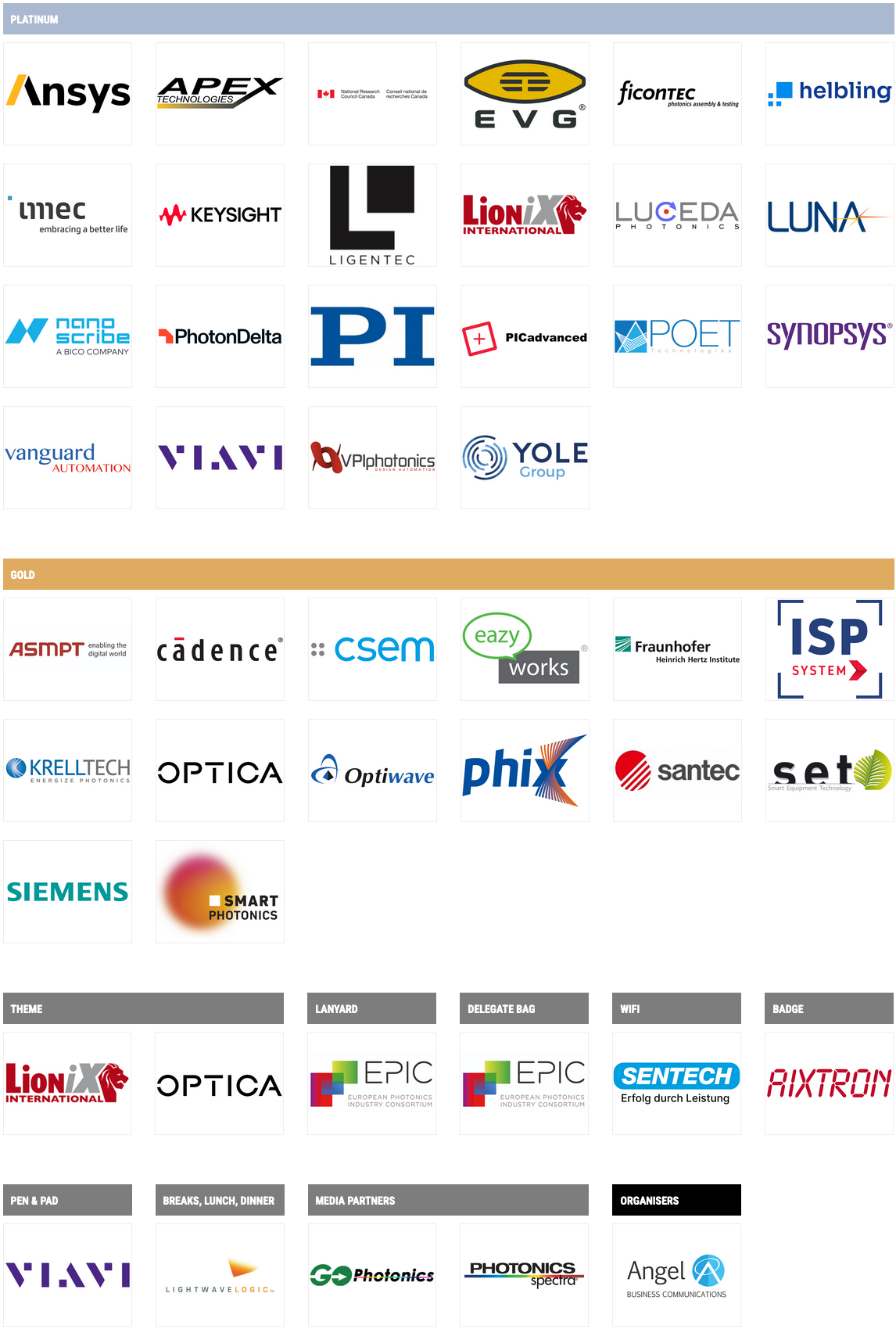

Co-Conference Chairs Dr Michael Lebby and Dr. David Cheskis reflect on the April 2024 event.
We have just completed the 9th annual PIC International Conference, and again like in the spring of 2023, this conference not only surpassed everybody's expectations, but thrilled us with live presentations, challenging discussions and questions, exhilarating and deep though panels for PICs, excellent exhibits, first class personal and B2B networking, and finally great lunches and dinners. The technology updates and commercial progress generated lots of audience questions for the speakers. Speaker presentations were shortened to 15mins to allow the full 2 days of conference programing to contain a broad and wide cross-section of the PIC industry. The whole value chain for the PIC industry was represented that ranged from wafers to epitaxial growth, devices, packaging, modules, testing, evaluation/analysis equipment, and systems, to social media. It is now very clear (at least to the co-chairs for PIC International that PIC International is the conference to attend if your interest is Photonic Integrated Circuits (PICs) not only in optical networking and internet, but other market verticals such as automotive, sensing, medical, displays, instruments, agriculture etc.
We again filled all of our seats, and believe it or not, we had standing room only throughout the 2 days of talks. There was much cross pollination between parallel sessions from CS International and Power Electronics International with attendees choosing to listen to talks from all 3 conferences. We also had a number of senior executives attend PIC International from the Angel Tech Executive Strategy Summit (ESS) on the first day of the conference.This year, there were over a record 900 delegates attending three days of highly condensed sessions on photonic integrated circuits (PICs) that focused not only on innovative technology, but how PICs could alleviate major headaches, issues and opportunities that optical networks, datacentres, telecommunications systems, automotive applications see today. Many talks focused on how PICs could be implemented into novel and innovative applications to move the industry forward commercially, and keep the industry moving forward such as Automotive LIDAR, sensing, displays, healthcare, etc. As in 2022 and 2023, one of the biggest drivers for PICs today are fiber optic communications for hyperscaler data communications interconnects. A number of global giants and exciting SMEs (small and medium size enterprises)/start-ups with PIC technology platforms conveyed their opportunities today and in the near future for PIC-based innovative solutions for their businesses. These addressed high speed, low power consumption, innovative packaging (via co-packaged solutions), reliability, and cost effectiveness.There were also talks that explored PIC based technologies outside of fiber optics and optical networking, and those areas included healthcare, agriculture, bio, sensing, and LIDAR for automotive applications. One of the most promising segments discussed at the conference is the use of PICs in the agricultural market, and this was forecasted to grow very quickly over the next decade.The conference discussed in detail incumbent PIC technologies such as InP and Silicon Photonics, as well as exciting new and emerging technology platforms such as electro-optic polymers such as slot modulators on 200mm silicon wafers, thin-film lithium niobate, barium titanate (BTO) and dielectric (SiN based) technologies. Hybrid PICs was used to denote the mixing of various technology platforms to improve the overall performance of PICs. Examples were the use of electro-optic polymers onto silicon photonics from commercial CMOS foundries, and as well as dielectric materials for integrated Photonic solutions on silicon wafers from foundries. Both electro-optic polymer slot modulators and TFLN demonstrated super high speed (200Gbps PAM4) and very low power consumptions with less than 1V drive voltages, which is a critical need for the hyperscaler environment.The incredible growth of silicon photonics as a base platform continues with an increase in popularity and acceptance as a new incumbent technology with talks from market researchers and companies following the business trends. Indium phosphide as one of the incumbents for PICs was demonstrated to show higher density PICs that are expected to impact the 5G markets, hyperscaler datacenters, and telecommunications. Similarly as in 2023, there were exciting updates of PIC in sensing, medical, and LIDAR applications.The conference also discussed both datacentre and telecommunications opportunities for PICs with forecasts for new architectures, standards, technologies and cost expectations. The latest results in the PIC field were also presented and showed a significant performance upgrade towards transceivers at 1600Gbps and the potential for 3200Gbps.There were a number of exciting sessions, where one session discussed improvements in PIC infrastructure for designing and manufacturing robust and reliable PICs using software tools for modelling, simulation, and production. This was supported by many PIC talks that addressed PDKs and other metrics needed to quickly grow PIC markets including the use of hybrid PICs that contemplated new materials such as electro-optic polymers both for slot modulators and plasmonic slot modulators, thin film lithium niobate integrated with silicon, barium titanate, as well as novel lasers including quantum dot varieties.This year, new and innovative talks in the bio and medical field discussed how PICs based technologies can enable new products that are more miniature, low power, and high performance, which is becoming especially important for hand-held battery powered diagnosis and health monitoring products.The conference speakers showed that the result of designing PICs for the popular verticals of telecommunications and data communications and how these solutions could easily be applied to medical, measurement, automotive, and other industrial applications for PICs.Live personal networking was truly intense with a well designed exhibit positioned immediately next to the conference rooms that gave the attendees great opportunities to meet other folks in the PIC infrastructure. The excitement of a live conference was buzzing with meetings, discussions and business on the exhibit floor. There was 1 live panel session this year that were chaired by Dr. Jose Pozo that addressed silicon photonics packaging and volume scaling for PICs. The panels were filled with technical experts that are internationally known for PICs that addressed disruptive technologies and how those technologies would impact the existing infrastructure. Both vertical and horizontal fiber connections and interfaces were discussed and how packaging could evolve like the silicon industry that has implemented chip-scale packaging )CSP) concepts for electronics. The panelists discussed the merits and advantages of these packaging directions for volume scale of PIC technologies.All presentations over the past 2 days showed a number of improvements in PIC technology over the past year. PIC markets are growing strongly over the next decade with increased density and speed, as well as the scalability of PIC technological platforms. The rise of the hybrid PIC and shared foundries showed that customers are now more open than ever to find the right PIC solution for their particular portfolio.A focused, thrilling, and well attended, standing room only conference, with a high level of technical content, the 9th PIC International surpassed itself again in 2024. PIC International is the conference to attend for the latest and greatest in photonic integrated circuits and has become a truly global and credible event. We are all looking forward to 2025 as 10th PIC International now has become the event to attend globally. 10 years and growing. Brussels in 2025: Beer, chocolates, freedom fries - and the best PIC technologists to network with worldwide...

